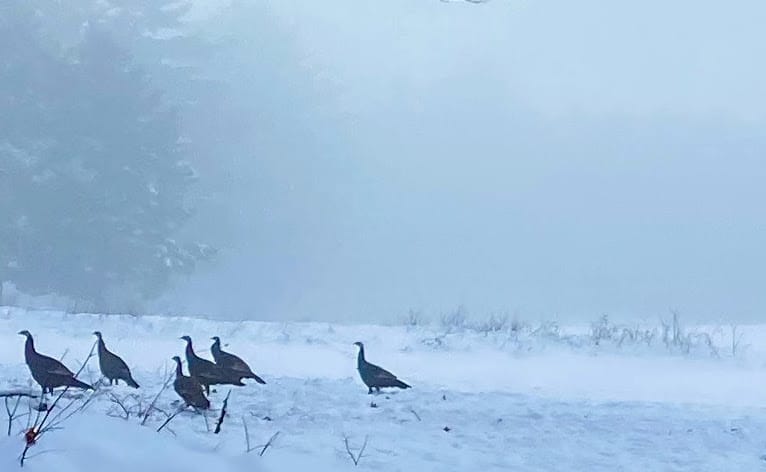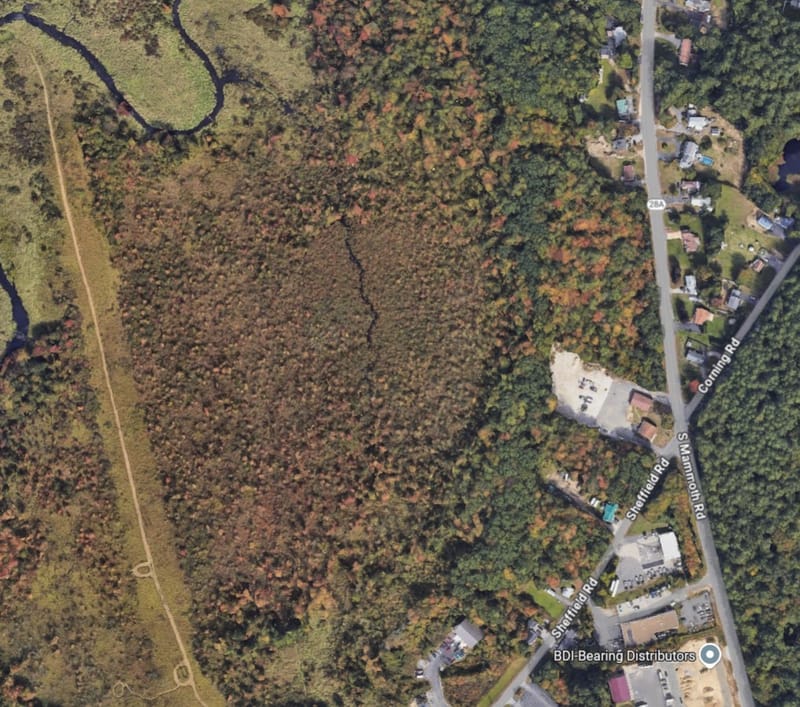Got gobblers? NH Fish and Game wants you to take the 2025 Winter Turkey Flock Survey
The 2025 Winter Turkey Flock Survey runs from January 1 through March 31.

CONCORD, NH – The New Hampshire Fish and Game Department is asking the public to help document flocks of wild turkeys this winter by participating in the 2025 Winter Turkey Flock Survey. The survey runs from January 1 through March 31. The information regarding the status of wintering wild turkeys is important because severe weather and limited natural food supplies can present serious challenges for turkeys. It’s fun and easy to participate by following this link.
“Winter represents the most critical season for wild turkeys in New Hampshire because of the potential for extended periods of deep snow and prolonged cold temperatures,” said Andrew Timmins, Game Programs Supervisor with New Hampshire Fish and Game. “Measurable snow accumulations that remain on the ground for extended periods of time can make it difficult for turkeys to travel and access food. Turkeys have adapted in ways that allow them to survive at the northern most extent of their range, including the ability to accumulate fat, reduce their physical activity to conserve energy, and trap air in their insulating feathers that is then warmed by their bodies. However, access to high-energy food it critical to their winter survival. The Department conducts the Winter Turkey Flock Survey each year to monitor turkey abundance, distribution, survival, food usage, and disease prevalence.”
In recent years, an average of 804 flocks and 14,150 turkeys have been reported through the survey. Flock reports vary annually: during winters with less snow, birds are not as confined and congregate less around localized food sources, resulting in fewer reports. During more severe winters, however, turkeys will congregate at available food sources such as backyard birdfeeders, and flocks become more visible increasing reporting rates. Turkey’s feed on beechnuts, acorns, and apples during the winter, and mast tree stands located on south-facing slopes where the available sunlight limits snow depths are very advantageous to turkeys. The overall long-term trend indicates an increased number of flocks, more turkeys, and a greater distribution of birds around New Hampshire.
The state’s current turkey population, estimated to be 45,000 birds, represents a 10% decrease from the estimated 50,000 turkeys thought to be present from 2020 to 2022. This decline is largely the result of poor nesting success and subsequently a reduced number of poults that reached maturity during the spring and summer of 2023 due to record rainfall. Weather conditions during the spring and summer of 2024, however, were more favorable. “If spring and summer weather conditions over the next few nesting seasons remains similar to the conditions experienced in 2024, the turkey population should quickly rebound,” said Timmins. “Participation by the public in both the Winter Flock Survey and the Summer Brood Survey will greatly help biologists track population recovery progress.”
Monitoring the prevalence of two turkey viruses, specifically avian pox and lymphoproliferative disease virus (LPDV), remains a priority for the Department’s turkey management program. A critical way that these diseases are monitored is through public reporting, and survey responders are asked to document turkeys displaying lesions or wart-like protuberances on their head or neck through the online winter survey. While both disease are still prevalent in the population, reports of symptomatic turkeys remains stable and relatively low.
To learn more about these viruses, follow this link.
Wild turkey management and research is made possible by the federal Wildlife Restoration Program, which is funded by an excise tax on the sale of firearms, ammunition, and archery equipment.





